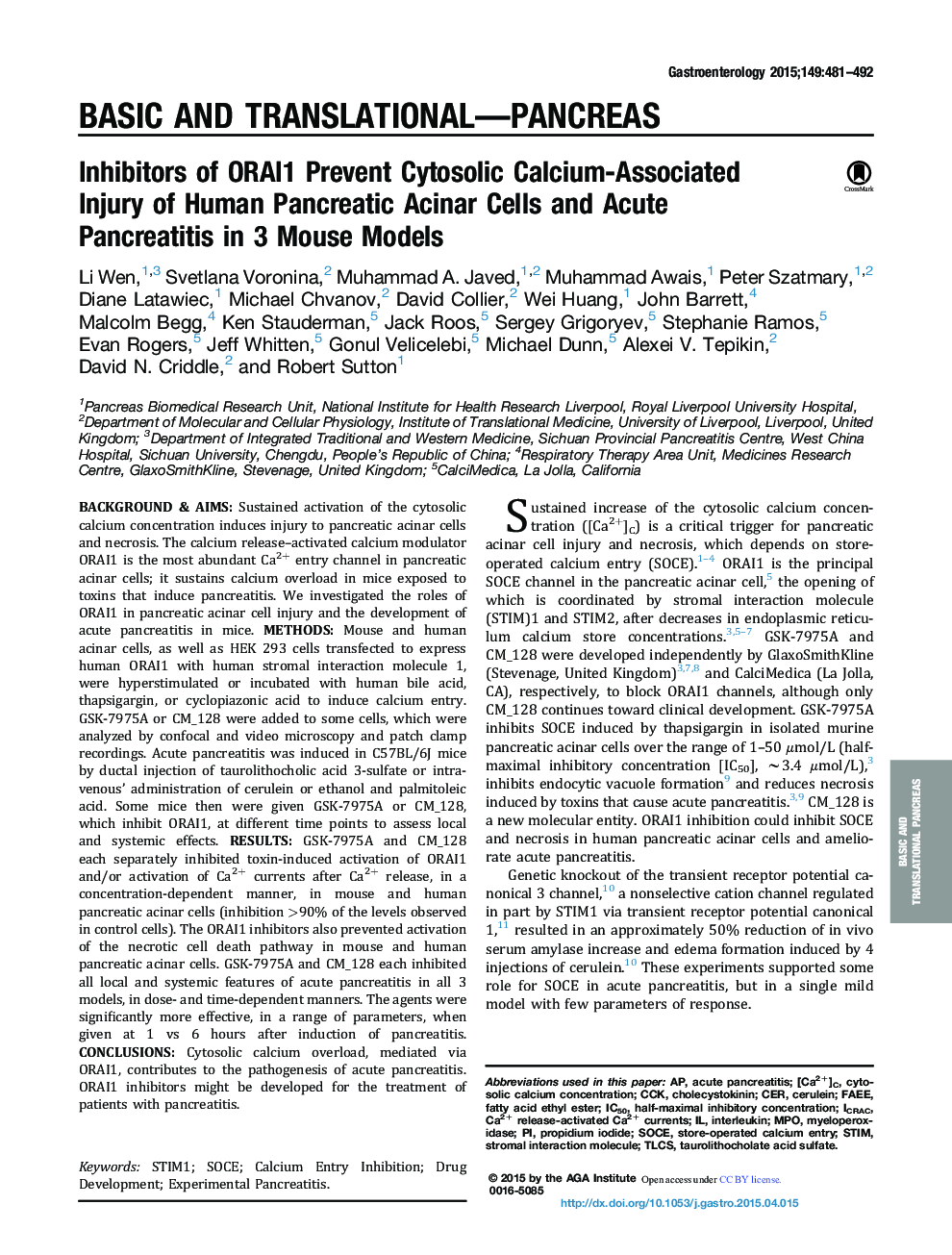| کد مقاله | کد نشریه | سال انتشار | مقاله انگلیسی | نسخه تمام متن |
|---|---|---|---|---|
| 6093370 | 1209787 | 2015 | 19 صفحه PDF | دانلود رایگان |

Background & AimsSustained activation of the cytosolic calcium concentration induces injury to pancreatic acinar cells and necrosis. The calcium release-activated calcium modulator ORAI1 is the most abundant Ca2+ entry channel in pancreatic acinar cells; it sustains calcium overload in mice exposed to toxins that induce pancreatitis. We investigated the roles of ORAI1 in pancreatic acinar cell injury and the development of acute pancreatitis in mice.MethodsMouse and human acinar cells, as well as HEK 293 cells transfected to express human ORAI1 with human stromal interaction molecule 1, were hyperstimulated or incubated with human bile acid, thapsigargin, or cyclopiazonic acid to induce calcium entry. GSK-7975A or CM_128 were added to some cells, which were analyzed by confocal and video microscopy and patch clamp recordings. Acute pancreatitis was induced in C57BL/6J mice by ductal injection of taurolithocholic acid 3-sulfate or intravenous' administration of cerulein or ethanol and palmitoleic acid. Some mice then were given GSK-7975A or CM_128, which inhibit ORAI1, at different time points to assess local and systemic effects.ResultsGSK-7975A and CM_128 each separately inhibited toxin-induced activation of ORAI1 and/or activation of Ca2+ currents after Ca2+ release, in a concentration-dependent manner, in mouse and human pancreatic acinar cells (inhibition >90% of the levels observed in control cells). The ORAI1 inhibitors also prevented activation of the necrotic cell death pathway in mouse and human pancreatic acinar cells. GSK-7975A and CM_128 each inhibited all local and systemic features of acute pancreatitis in all 3 models, in dose- and time-dependent manners. The agents were significantly more effective, in a range of parameters, when given at 1 vs 6 hours after induction of pancreatitis.ConclusionsCytosolic calcium overload, mediated via ORAI1, contributes to the pathogenesis of acute pancreatitis. ORAI1 inhibitors might be developed for the treatment of patients with pancreatitis.
Journal: Gastroenterology - Volume 149, Issue 2, August 2015, Pages 481-492.e7